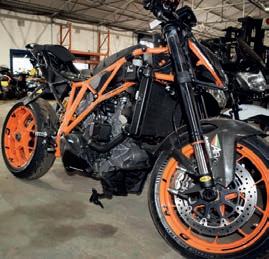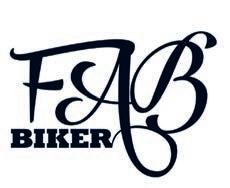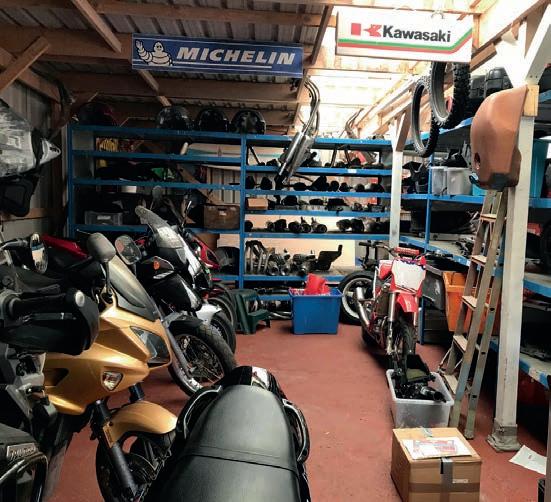
11 minute read
Breaking – The bottom line
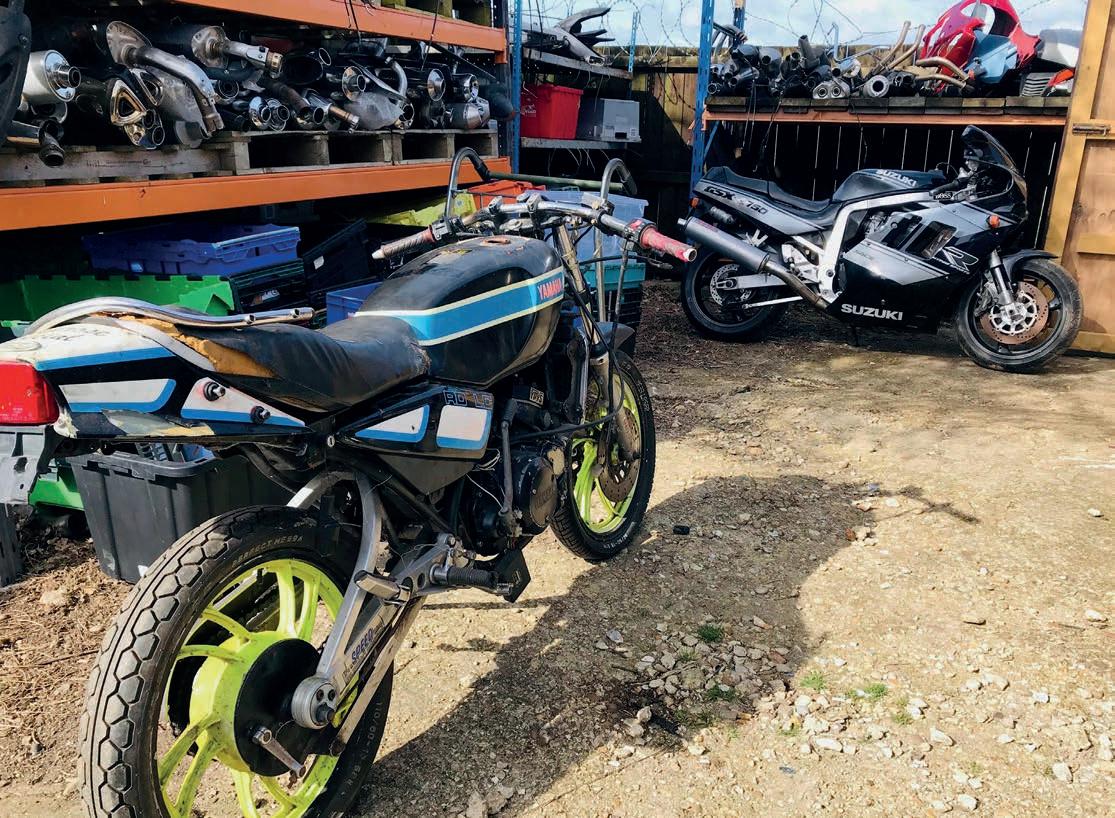
It’s perhaps the most overlooked part of the bike trade, but bike breakers are a massive part of the lifeblood of British biking. Alan Dowds investigates
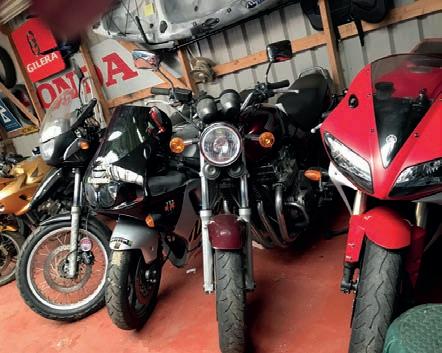
For many bikers, the breaker has been – and continues to be – an essential part of their two-wheeled life. Bikes are, by nature, exposed, fragile, and fall over with minimal provocation. Metal parts corrode, plastic panels are easily smashed, electronic components fail – and spare parts are vital. But the economics of supply chains means new replacements are often uneconomical. If you crash a ten-year-old bike that’s worth £2000, you’re unlikely to spend £1000-plus replacing a damaged fairing and fuel tank with brand new parts. Pricing up a replacement ECU for even a basic Japanese middleweight will have you reaching for a stiff drink.
Enter the breaker. A business that buys distressed bikes from (often) distressed owners, strips them down to their constituent parts, and stores them on a shelf until another distressed biker turns up looking for that £750 ECU or £1000 fuel tank at a slightly better price. A deal is struck – and everyone is happy (ish).
In many ways, it’s very much the ‘Cinderella’ end of the bike trade though. You don’t see breakers with massive stands at bike shows. They seldom shell out a load of cash on marketing or PR. The premises are generally at the rough end of town, under a railway arch, in a barn, or in an old converted factory unit. That’s because these businesses exist in the purest economic sense: it’s all about supply and demand. Parts which are easily damaged in a crash, like plastic fairing panels and alloy footrests are in high demand. And many of the bikes coming into a breaker have been in a crash – so the parts on them are already damaged. Supply is low, demand is high, and you don’t need to be Warren Buffet to determine where the price goes.
So – an essential part of the biking world, if a little bit invisible. And it’s a trade which has undergone some massive changes down the years.
We spoke to people at two different ends of the breaking world. First up was Scott Redmond, who’s owned his own breaking businesses for thirty years, starting off in Romford with Romford Breakers, and now in Spalding, near Peterborough, running a breaking firm called InsMoto. He’s worked as a journalist at Performance Bikes and also as an advertising man, but breaking is clearly in his blood. He still works on the front line, buying bikes, stripping them down, taking online orders, packaging parts, and sending them out. We also spoke to Helen Smith from Synetiq, which is a massive global vehicle recycling and auction firm based in the US, that deals with cars and vans as well as bikes.
Scott Redmond kicked us off with a long chat about how the business used to work when he started out in 1992. “For three decades now, I’ve been involved with the sub-prime end of the motorcycle industry. Over those 30 years, I have had to adapt to the ever-changing landscape of how the bike-breaking game operates. The basic task – finding suitable bikes to break in return for a profit – is pretty much the same. Outside of this, pretty much everything else is different.”
Redmond’s tales of 1992 will chime with the experience of most of us working back then. No mobile phones, no internet, no PayPal, no eBay – it was very much an analogue, labourintensive world.
“In 1992, aged 22, I took the plunge into self-employment. My background of working at MCN at their London advert hub had got me into buying and selling motorcycles, and my first breaker bike was a Honda 400/4. I had someone who wanted parts from it, and his shopping list got my initial outlay back. A few weeks later, after sticking an advert in the LOOT free ads paper, I had made enough profit to realise that there might be something in this…”
Over the next decade or so, Redmond worked his socks off building up a couple of breaking businesses. And much of that work centred around a few then-vital components: the MCN ad pages, his trusty landline telephone (people didn’t call expensive mobile numbers back then…), the Post Office, and a Ford P100 pickup in which he trawled London and the South East for crashed, seized, abandoned and stolen bikes.
“In 1992, there was only one place to advertise: MCN. Not doing so was like winking at a girl in the dark. Ad deadlines were Friday prior to the following Wednesday, so your ad was already out of date come publication day. I used the semi-display pages, up where the
classifieds were. My advert was rarely larger than 10cm by one column. At around £10 per cm it was always a challenge not to go larger and overspend. By the late 90s, I spent more with EMAP on adverts than I paid NatWest for my mortgage.
“That advert meant my week was mostly waiting on the phone to ring. This was before mobiles too. I did get a mobile in the mid-90s, but nobody ever called due to the higher call rates, and texting wasn’t really a thing.
“Yellow Pages was the only other must-have advert. Their strong TV advertising meant it was the go-to for many households – you let your fingers do the walking when you needed to buy stuff.”
Two other names bring back distant memories from the 1990s – Partsearch and Partfinder. These firms would collate (usually hard-to-find) parts requests from punters, then fax (younger readers will need to ask a parent) listings of those requests out to breakers twice a day in return for a paid subscription.
“Partsearch and Partfinder were a godsend,” said Redmond. “To bag a sale, you needed to ring the punter back first and be cheap. It was a great idea and often saved a quiet day at the yard.”
If the process of marketing and selling used parts was arcane, the methods for sourcing bikes to break were similarly primitive. Redmond outlines the old-school tactics. “Small ads, word of mouth and from within the trade. There were lots of wild-goose chases around London with my A to Z in one hand and coins for phone boxes in the other.
“Buying the right stock at the right money is the hardest part of my business. Mess up here at the point of sale, and the whole process of breaking it is for love. I hate love jobs but have obviously had my fair share of bad deals. It keeps you sharp, though. If it were easy everyone would do it!”
Perhaps the wildest memory that Redmond recounts covers payments. It’s easy to forget how slow and labour-intensive financial transactions used to be.
“The basic payment methods were cheques, postal orders and cash on delivery,” said Redmond. “If you could stretch to paying for a credit card machine and jump through all the hoops to obtain one, that was a worthwhile thing to do. If not, it was either sit and wait to clear cheques or cross your fingers and send the parts out sooner. I went for the latter, and other than one trade buyer that regularly sent me bouncing cheques, I can’t think of any time where I got caught out. Like George sang, you’ve got to have faith…
“Then there was the daily ride to the bank to pay the cheques in; that was once Postman Pat had got them through your letterbox (though, to be fair, there were two deliveries of letters a day back in the 90s).”
The final step was sending out the parts,
and this is one area where things aren’t quite so alien. “Daily trips to the Post Office were the norm. Parcelforce handled the larger stuff, and anything non-mainland UK usually carried a surcharge. European and further afield sales were too much aggro and not for me. TNT (Tomorrow Not Today was their trade name). Daily pickups saved me carting larger items to the Post Office, always best avoided on pension day! There was loads of paper admin involved, and the monthly invoices became very large.” Fast forward thirty years, and Redmond’s life seems more straightforward in many ways. In terms of advertising and selling, he’s full of praise for eBay. “Nothing else works like it. I first got on the bay in 2001. It was Christmas Day, and I dipped out of the celebrations and sat in my office with my newly-purchased PC. I listed a load of Blackbird parts, all on auctions. For over a year, I didn’t even have a digital camera. All of my listings were just very descriptive. “eBay is a very different platform now. Is it better? Is it worse? It depends who you ask, but it is the only place that works for me. Sure their fees are an issue for some, but not me. The more I pay them in The basic commission, the more stuff I have sold; simples. It frees payment up my time, and I wake up to sales. There’s no need methods were to sit next to the blower all cheques, postal day, and I haven’t placed an advert in any print format for orders and cash 20 years.” on delivery Prioritising eBay business also helps with payments and shipping, since the online marketplace looks after those too. “eBay and PayPal payments are an ever-moving target in how they cough up your dosh. The latest way is managed payments, and you get to set how regular you want your payouts. The money that lands is less your eBay Packlink fees for postage and the eBay fees. It makes bookwork easier for me, and with the push by HMRC to get us all digital, it’s got me into good habits. Cash is nigh-on non-existent these days. “For deliveries, eBay Packlink is slick and easy to use, and Parcelforce is still my chosen option. There’s no end of other couriers wanting your business out there, but from my experiences, they’re no better than Parcelforce.” eBay isn’t so good for picking up well-priced bikes to break – ironically, its effectiveness in reaching many potential buyers pushes prices up compared to more serendipitous transactions. But the internet does assist in other ways when sourcing stock. “Wanted adverts still work, from cards in local shops through to online campaigns. Websites and a Google presence takes years to reap the rewards, but it is doable. Social media is bittersweet. Facebook Marketplace is a cesspit! Cheap bikes often appear, but you need to be fast to buy them. Lots of scammers out there, too. If it looks too cheap, then be prepared to get your arse smacked. Especially if they want a deposit upfront.” SYNETIQ Business news
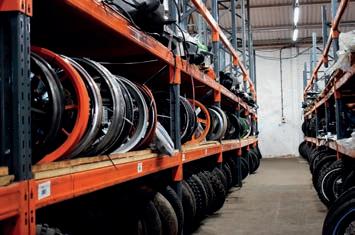
AT THE OTHER END OF THE BIKE RECYCLING sector is Synetiq. It’s part of the massive IAAI multinational group, which operates vehicle auctions and recycling centres across the US, Canada and the UK. Bikes are a small part of their business – cars are by far the majority of its work. But as the firm’s content manager, Helen Smith told us, they still break a lot of bikes. “It’s a small percentage of our overall dismantling activity, but we dismantle on average 1350 motorcycles per year. These range from 50cc mopeds up to big V-twin Harley-Davidsons, and anything in-between.”
The Synetiq firm’s bike sourcing is more of a regular corporate business function rather than the more casual methods used by smaller outfits. “Our main source of motorbikes is from police forces,” said Smith. “A lot of these are stolen/ recovered. We do get some from insurers too.”
According to Smith, there are similarities in the processing between cars and bikes. “The motorcycle dismantling industry has changed, much the same as the car dismantling industry. There is a greater desire to keep vehicles longer, and they are often maintained by the owners who will try to keep the costs down by looking for salvageable parts.”
Are there differences in processing cars and bikes? “The initial process is the same in regards to ‘depolluting’ the motorcycles to ensure they are free of any pollutant fluids like battery acid etc. We will then strip a bike completely, leaving just the frame. The frame is then destroyed, and any salvageable parts are cleaned, imaged, and added to our stock inventory system before being advertised on our sales platforms.”
Smith is also keen to emphasise the green nature of Synetiq’s operations. “Compliance is critical here – as an Authorised Treatment Facility, we regularly report to the Department for Environment, Food & Rural Affairs, and our operations are subject to the EU’s End of Life vehicle recycling directive.”
“We’re solely focused on sustainability, so ensuring we recycle our scrap metal is a by-product of our operations. Scrap prices do dictate when we will cash it in so we can get the most value out of every vehicle we process.”
